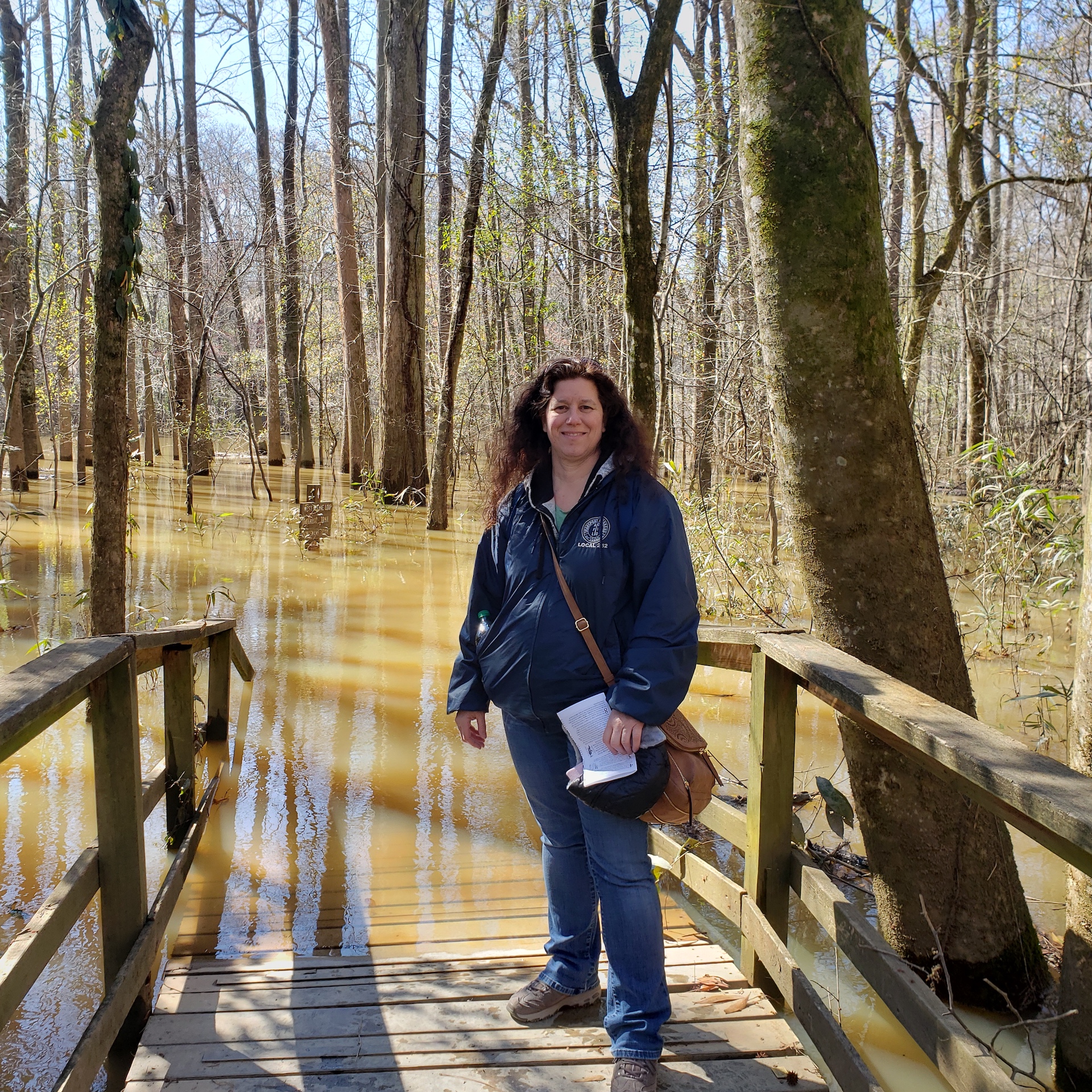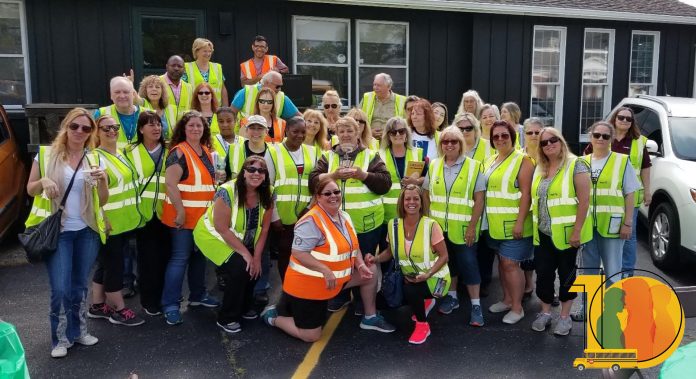Denise Fleming started as a school bus driver 20 years ago, but this upcoming school year is going to be a lot different than what she’s used to.
Fleming is currently a school bus driver and driver trainer for contractor First Student on Long Island, New York. She prides herself on safety and training and is also for working up the ranks of the Transport Workers Union Local 252, for which she currently serves as a vice president.
Becoming a driver trainer last year is one of her greatest career accomplishments, she shared, as she can provide a more hands-on approach to teaching people how to drive a school bus.
Fleming started in the industry in 2000 because she had younger children at home who had just started school at the time. The flexibility of the job hours and the fact that she didn’t have to pay for daycare services, as her children could accompany her on her route, appealed to her.
Although her two children are now in their 20s, Fleming is fostering her 8-year-old nephew and 3-year-old niece, but the rules have changed. She can no longer take her children on the bus with her, which does present some challenges.
“[It’s] a big challenge for daycare and that’s hard juggling my schedule, and now that I’m more of a full-time bus driver and doing training,” Fleming explained. “So, I have a lot on my plate.”
She noted that not being able to drive her own kids is one of the biggest operational changes she’s noticed throughout her career. However, what’s in store during the coming school year may top that.

Fleming explained that there are a lot of unknowns with COVID-19, and she questioned whether New York state is even going to allow students to go back to in-person education in the fall. She explained that prior to the novel coronavirus, her operation seated three elementary students to a seat and transported 60 to 70 students on a school bus at once.
Now, she said with the close contact of the job and social distancing guidelines, she doesn’t see how transportation will operate.
“I keep the mask on for protection of [myself] and for other people,” Fleming said. “Personally, I just cannot stand that mask for a long period. I don’t understand how a child is going to keep [it] on.”
She commented that bus drivers already have a hard enough time getting children to stay in their seats. There’s no way, she added, that drivers are going to be able to monitor mask usage while concentrating on the road.
She recalled that when the new coronavirus first broke, First Student developed a cleaning crew and asked for bus drivers to sign up for additional work to clean the buses every night. She said they rotated every night, and the crews wiped down the entire interior of the bus. She appreciated that effort, as it gave the drivers extra money.
But now, she said everything is at a standstill. No one knows if September is going to be the start of school or not.
Another big concern, especially for contracted school bus operators in New York, is funding. She noted that school district funding allocations in many areas were reallocated as soon as schools closed. “And our members were laid off, and that meant no health benefits, etc.,” she explained. “So, the real concern now is, if and when schools reopen, [there is] the retention issue. And getting the drivers, operators and monitors to come back will be an issue because many of them have had to leave to find other jobs to just [support] their livelihood.”
Fleming noted that she was one of the lucky ones as her school district, William Floyd, paid First Student. She continued to receive pay and benefits throughout the pandemic. However, she noted that others in her union and within other companies weren’t as lucky.
“I actually lucked out with a company that did the right thing and a school district that did the right thing,” Fleming said.

Another challenge is the risks of COVID-19 to those over the age of 65 and with underlying health conditions, categories that many school bus drivers fall in. She noted that she is concerned about the drivers who started driving in the early 1990s. Many of them haven’t left their homes since the quarantine started in New York state. She added that no driver at her location has left the job as of yet, but she said that could change as it gets closer to school startup.
She said all the drivers did recently come back to conduct safety training for the coming school year, but she’s not confident that means everyone is going to be driving again.
“It’s still a waiting game. Who knows what’s going to happen over the next two months … they’re going to have to figure something out with the virus,” Fleming said. “I don’t think anybody’s ready to jump the gun and just tell the company they’re not coming back yet.”
She said she is in the process of reviewing the New York state guidance that was released for reopening schools, but she doesn’t want to get tied down with any one direction, as she said the safety requirements seem to change daily. However, she said sitting one child per bus seat is “unrealistic.”
“There’s no way that that’s going to work. You can’t go from 66 kids on a bus down to 11,” Fleming said.

Plus, she said that there are not enough resources to be spread out across new routes, as they require more equipment and drivers.
“You can’t just go to a school bus company and apply for a job and get hired,” Fleming explained. “There is special licensing that needs to be done. There are permit tests that need to be done through the Department of Motor Vehicles. There’s a training program they need to be put through, there are road test requirements. It’s a time-consuming thing, [and] it takes a few weeks in order to be qualified to drive a school bus.
“So, to just magically say, ‘Oh well, we know we’re going to bring on 30 more buses and 30 more drivers,’ is unrealistic. It’s just not going to happen that way.”
She said one answer could be parents driving their kids more often to help with reduced school bus capacity. However, she noted this isn’t a perfect solution as not every parent is going to be able to take their kids to school because of work schedules.
Going Forward
Going forward, Fleming said she hopes to continue to work her way up the ranks and to take additional classes, noting that there are different levels within the safety department that she would like to experience.
Related: School Bus Contractors Included in New $10B Coronavirus Economic Relief Bill
Related: (STN Podcast E11) – Prep & Budget Smart: A Contractor Perspective on Post-Coronavirus School Startup
Related: New York School Bus Contractor Permanently Closes Doors Due to Coronavirus
Related: School Buses Among New York City Fleet to Go Electric
As a female leader in a mostly male-dominated industry, she shared her goal of encouraging more women to join the industry, as it provides good hours and flexible schedules. She is engaged in a working women’s committee and collaborates with other female members of her union to develop policies for better working conditions and leadership opportunities for aspiring women in pupil transportation. She also sits on the state conference board and focuses on initiating change in training.
When asked what keeps her in the industry, she said it’s her ability to choose her own schedule and to have plenty of family time.
“I love the hours, I love my weekends off,” Fleming said.
















